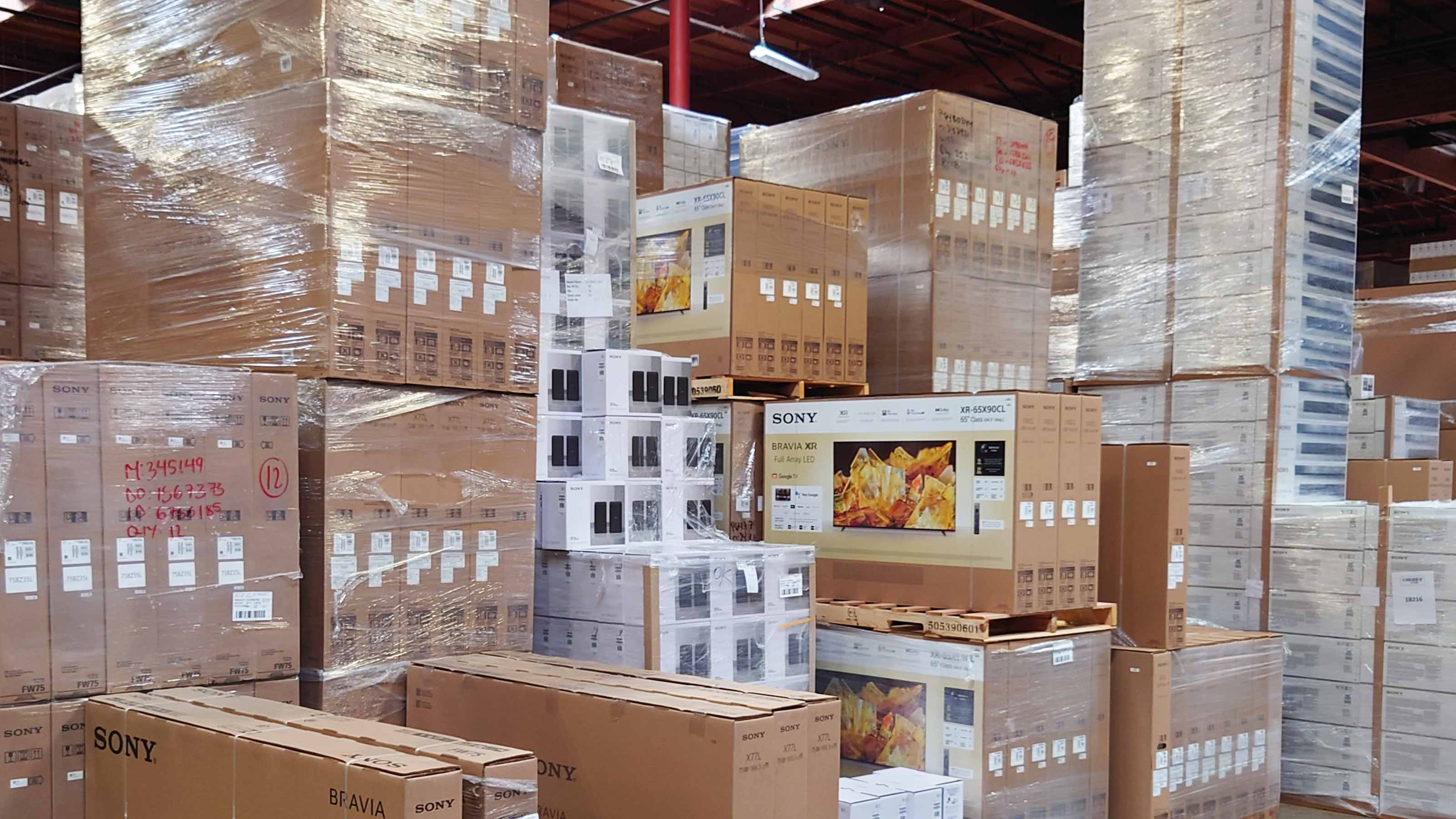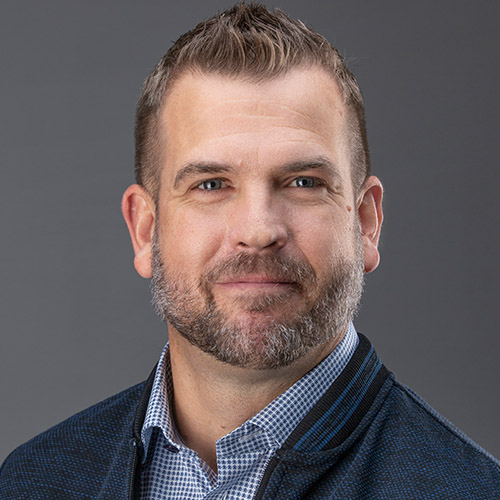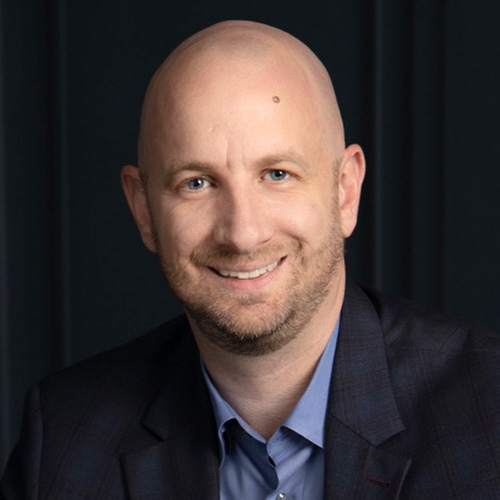Supply Chain Lessons Learned
Integrators and manufacturers share how the pandemic-induced crisis has changed the Pro AV industry.

The COVID-19 pandemic brought with it panic, confusion, and economic strife around the world. A catastrophic fire at a semiconductor chip factory in Japan in late 2020 didn't help matters, nor did a giant container ship that blocked the Suez Canal for almost a week in early 2021. The resulting supply chain issues cast a long shadow across the Pro AV industry for years, with product shortages, back orders, and unusually long lead times resulting in delayed, re-engineered, and even cancelled projects.
[SCN Top 50 Systems Integrators 2023]
In other words, the supply chain disruption cost Pro AV integrators, dealers, and manufacturers, as well as their customers, a lot of time. And money.

Supply chain talk has quieted in the last few months, but according to Drew Novelli, purchasing manager for Verrex, an integrator headquartered in Mountainside, NJ, the problems are not completely in the past. "There are always going to be issues with the supply chain,” he explained. “Of course, it’s not as severe now as when the pandemic started. Whether it’s a worldwide chip shortage, a surprise price increase on copper wire, or a brand-new piece of equipment that is simply in high demand, we will always need to be aware of the supply chain.”
While many manufacturers are back to business as usual, there are still lingering issues, according to Jeremy Caldera, executive vice president of Pearl Technology, an integrator based in Peoria Heights, IL. "The most hard hit currently still continue to be control systems, wireless microphones, as well as certain types of amplifiers and speakers," he noted.
[Editorial: Penny Wise, Ammo Round Foolish]
Sony’s Rich Ventura, vice president, professional display solutions, also expects to see continued concerns. “While it has gotten a lot better, there is still a backlog on gear—but also a backlog on installations due to a lack of labor,” he said. “Because of the ongoing issues over the last few years, many manufacturers overcompensated and now find themselves with excess inventory.”
A daily selection of the top stories for AV integrators, resellers and consultants. Sign up below.
All Eyes on Crestron
While many companies were affected by supply chain issues, Crestron’s troubles seemed to garner the most attention, which makes sense, as the manufacturer is a huge supplier of equipment to both residential and commercial integrators. Crestron also drew the spotlight upon themselves by communicating openly with their dealers about the situation, even hosting a town hall on the subject and inviting members of the press.

“In an effort to be a good partner—and to be transparent—we talked about the challenges we faced, and we enlisted our customers and our dealers in coming together to navigate through this crisis,” recalled Brad Hintze, executive vice president of marketing, Crestron. “That kind of transparency and trying to focus on partnership really put us out there.”
In addition to communicating directly with their dealers, Crestron was also communicating publicly in an effort to take some of the heat off their dealers. “It was really important for us to make public statements, even though it was difficult,” Hintze explained. “Updating dealers and partners during this time period was like trying to hit a moving target; there were times that we would provide an update and then something would shift underneath us that would impact what we had just said. Crestron has always prioritized the customer, and being forthcoming about the state of the supply chain helped provide cover for our dealers as they were speaking to their end customers."
[Clancy: Crestron Answering Hybrid Workforce Needs]
Course Corrections
Josh Rush, chief marketing officer, Audinate, reported the company's supply chain issues have largely subsided, but that doesn't mean the company didn't learn a thing or two. "One of the big lessons we all learned was that the AV industry as a whole is still pretty small when fighting for allocation of scarce parts against large consumer electronics companies, EV manufacturers, military contractors, and the like," he admitted. "Hearing that some of the largest companies in the AV market had a hard time getting chip suppliers to even take their calls put that in perspective. As a result, our industry had to get creative."

Audinate developed three main strategies to navigate these challenges. "First, we used the power of all of our 500-plus OEM licensees to negotiate for a larger allocation of in-demand parts," Rush explained. "Second, we redesigned key products in our portfolio to use more readily available parts. And lastly, we accelerated the shift toward software-based Dante solutions that run on standard, off-the-shelf computing platforms."
While Audinate predominantly sells to manufacturers, Rush said the company tried to be "open and honest" to the entire Pro AV industry about the steps it was taking to get the supply of Dante parts back in the hands of its OEMs—and in turn to their customers—so they could make informed decisions about their installations. "This transparency has strengthened those relationships, and every time we hear about a new Dante installation, we are thrilled that we could do our small part to make that happen," he added.
“The importance of diversification of solutions was a valuable lesson that was learned because of the supply chain disruption.”
Rich Ventura, Sony
There were plenty of lessons to go around resulting from the recent supply chain issues. “As AV integrators, we need to provide project registrations and equipment forecasts as early as possible to the manufacturers and vendors so they can plan ahead and stock up accordingly,” Novelli said. “On the other hand, the vendors and manufacturers must provide realistic lead times that integrators can trust and schedule a project around. Additionally, the vendors and manufacturers need to offer alternative solutions when an item won’t arrive in time. Without proactively offering another solution, the integrator is forced to move on to a different vendor to meet project timelines.”
"We have learned to set expectations early in the sales process for delivery," Caldera explained. "This has lost us some jobs; however, I would rather be up front with our clients about expectations and delivery. Another lesson learned is to plan for the unexpected. Some manufacturers may say they have something in stock—but once a PO is issued, that has magically changed. Always have a plan B and expect pricing variances."

"While globalization unlocks new markets, it also underscores the immense interdependence between markets, highlighting that regional issues can have a global ripple effect," observed Julian Arcila, product marketing manager for Seneca's Visual Media portfolio. "Although the recent supply chain disruptions did not significantly alter our internal processes, thanks to the robust global supplying network of our parent company, Arrow Electronics, it did prompt a review of our contingency measures, which we do regularly."

Even industry cornerstone companies like Sony had takeaways, such as the importance of having "more open solutions that allow you to mix in new control systems, as well as the significance of partnerships. Another lesson was to look at how software solutions can help bridge hardware solution gaps,” Ventura observed. "Another critical lesson was the need for transparent alignment with suppliers. All of this allows for stronger abilities to deliver complete solutions."
According to Ventura, Sony’s commitment to being agile and flexible served the company well during the worst of the crisis. “We’ve reinforced the value of aggressive planning, working closely with our customers and factories and using data to better understand our business,” he added. “Supply chain issues have given us the perspective to look at our business differently, and many of those lessons will continue to inform and transform our approach.”
Applied Knowledge
If you're looking for a silver lining, it could be argued that the supply chain crisis helped speed the adoption of software-based solutions from Audinate and other manufacturers. "We learned that having software options for our parts allows for much greater choice and flexibility for our OEM customers implementing Dante," Rush said, "and that is something that will be key to our product strategy moving forward."

Supply chain issues also impacted internal policies within Pearl Technology—in a good way. "Delays have caused us to focus on efficiency and improved design processes," Caldera explained. "We also now have standards in place for things like alternative production selection. And our operations team has changed our delivery process, which has yielded better communication with our clients and better long-term results."
Crestron, which expects to be fully caught up by the end of 2023, implemented new strategies to quicken the recovery and help a repeat from occurring, including improving its own internal processes. "One of the ways we sought to tackle that was by sorting through those orders and getting a better understanding of when the dealer actually needed the gear," Hintze said. "We continue to develop more sophistication into our order processing and demand planning to contemplate that kind of a world—where we're building to actual demand rather than building to build inventory."
Moving forward, do integrators need to continue to plan for the worst and hope for the best? For Verrex, the pandemic-induced supply chain disruption illustrated a need for better communication with vendors. “Although it may not be an official policy, the supply chain issues reminded our team that we must confirm lead times before committing to a specific product,” Novelli said. “We can’t sell an item to a client if we can’t purchase it.”
"A cardinal rule for integrators is to exercise due diligence," advised Arcila. "Thoroughly vetting vendors, understanding their resource capacities, and evaluating the technical support they offer during challenging periods is paramount. Our long-standing partnerships with industry stalwarts including Intel, Microsoft, AMD, NVIDIA, Linux, and Google have been invaluable in delivering reliable products to our customers, even in the face of supply chain disruptions."
“The best advice I can give integrators is to plan, diversify, and align with your partners,” Ventura added. “Also, have strong levels of alignment with your customers to define success—and use those metrics to deliver the right solution to solve their pain points. Supply chain issues can always happen. Better planning and communication will help decrease the impact to business.”

Mark J. Pescatore, Ph.D., has been the content director of Systems Contractor News since 2021. During his career, he's hosted and programmed two ongoing regional industry trade shows (including Future B2B's AV/IT Summit), produced and hosted podcasts and webinars focused on the professional video marketplace, taught more than a dozen college communication courses, co-authored the book Working with HDV, and co-edited two editions of The Guide to Digital Television.
